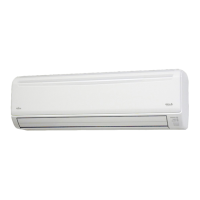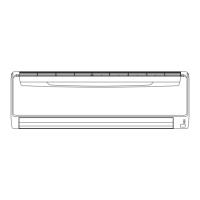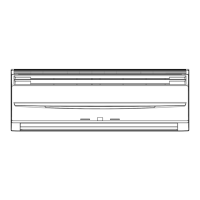Do you have a question about the Fujitsu ASU30C1 and is the answer not in the manual?
| Brand | Fujitsu |
|---|---|
| Model | ASU30C1 |
| Category | Air Conditioner |
| Language | English |
Explains automatic mode for Cooling and Heat & Cool models.
Describes how the sleep timer adjusts temperature and turns off the unit.
The indoor unit's intake grille can be removed for easy cleaning.
The air filter is treated to resist mildew growth for cleaner use.
An optional filter uses an electrostatic principle to clean air.
Allows convenient control of air conditioner operation remotely.
Three-dimensional control over air direction swing is possible.
Details components of the indoor unit shown in diagrams.
Details components of the outdoor unit shown in diagrams.
Details components of the remote control unit shown in diagrams.
Instructions for inserting batteries into the remote control unit.
Steps to set the clock on the remote control unit.
Guidelines for operating the remote control unit and its holder.
How to choose between AUTO, COOL, DRY, HEAT, or FAN modes.
Adjusting the desired temperature for cooling or heating.
Adjusting the fan speed for different operation modes.
How to turn off the air conditioner.
Explains automatic mode selection for cooling and heat/cool models.
Details on using the heating function and defrost cycle.
Usage and fan behavior in cooling and dry modes.
Information on using the unit for air circulation only.
Instructions for setting ON/OFF and Program timers.
How to set and use the sleep timer function for temperature adjustment.
Explains sleep timer behavior in heating and cooling modes.
Adjusting the up/down airflow direction.
Adjusting the right/left airflow direction.
How to activate and stop vertical air direction swing.
How to activate and stop horizontal air direction swing.
Steps to activate the energy-saving feature.
How to operate the unit using main controls when remote is unavailable.
Instructions for removing and cleaning the indoor unit's intake grille.
Instructions for removing and cleaning the air filters.
Information on using the optional air cleaning filter.
Lists checks for common operational and performance issues.
Discusses heating performance, high temps, and defrosting.
Describes fan speed changes in low ambient temperatures.
How the unit resumes operation after a power failure.
Optimal temperature and humidity ranges for unit operation.











